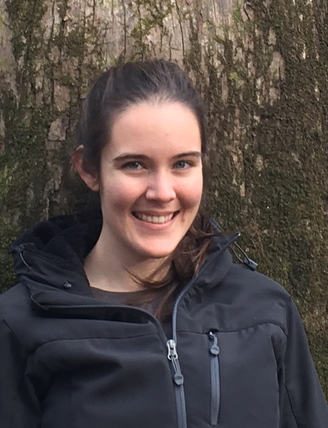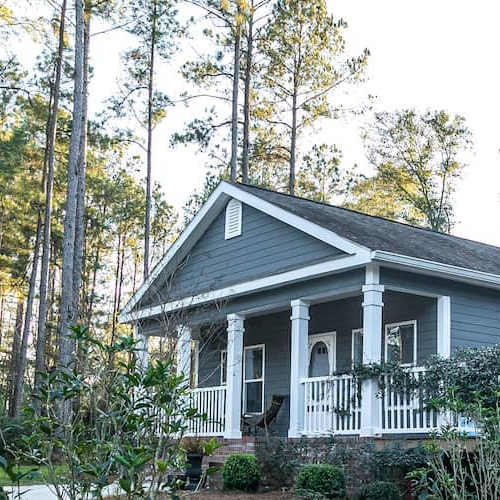What is the Design Approval Primary Inspection Agency (DAPIA)?
Mar 11, 2024
•3-minute read
When shopping for a manufactured home, you might come across the term DAPIA. Short for Design Approval Primary Inspection Agencies, these groups help shoppers confirm that a manufactured home is up to the standards set by the government.
Design Approval Primary Inspection Agency explained
A DAPIA reviews the plans for manufactured homes throughout the construction and installation process. The goal of a DAPIA is to confirm that a manufactured home is being constructed and installed in a way that upholds the applicable building codes.
In other words, DAPIAs keep an eye on the manufactured home design process. Along the way, a DAPIA confirms that the manufacturer is working with a design that meets the requirements set by the Department of Housing and Urban Development (HUD).
While DAPIAs work to keep manufactured home designs in line with HUD standards, these are separate entities from HUD. In many states, HUD has approved them through either a state-sponsored agency or by a private third party to monitor manufactured home designs. HUD sets the standards for manufactured home designs, but these agencies enforce these standards across the country.
As of writing, HUD has approved 13 state and private third-party agencies to conduct inspections of manufactured homes. The DAPIA overseeing your area varies based on where you live. But each one is tasked with the same goal of enforcing manufactured home construction and safety standards set by HUD.
What a DAPIA looks for during inspections
DAPIAs look at manufactured home designs to confirm they comply with the Federal Manufactured Home Construction and Safety Standards.
While manufactured homes can come with many different features, each must meet the specific requirements set by the HUD’s Construction and Safety Program. The mission of this program is “to protect the quality, safety, durability, and affordability of manufactured homes throughout the U.S., through the enforcement of the Federal Manufactured Home Construction and Safety Standards established by HUD.”
A few of the basic design requirements include a dwelling of at least 320 square feet that is attached to a permanent chassis capable of transporting the home. Other standards cover body and frame requirements, thermal protection, plumbing, electrical and fire safety elements.
During an inspection, the inspector working for a DAPIA may confirm the square footage of the home or the electrical plans. As the inspector looks through the design, the goal is to make sure the design meets HUD’s standards throughout the entire space.
The Difference between DAPIA and IPIA
A DAPIA is a type of HUD-sanctioned Primary Inspection Agency (PIA). But they are only one type of inspection agency. The other HUD-sanctioned inspection agency is a Production Inspection Primary Inspection Agency (IPIA).
Below is a breakdown of the different roles played by DAPIAs and IPIAs.
DAPIA
DAPIAs play an important role in the construction process and are only concerned with construction plans.
Before work can begin on a specific design, an inspector from a DAPIA must approve the plans. With that, these agencies take an active role in the process before construction begins on the manufactured home in question. If there are any compliance issues with the manufactured home design plans, the inspector can stop the process before a company spends time and money building out a particular design.
Once construction starts on the approved design, DAPIA inspectors will not keep tabs on the process.
IPIA
In contrast, IPIAs conduct inspections throughout the construction process. Instead of looking at construction plans, IPIA inspectors visit the manufactured home plant and have the opportunity to view homes during the construction phase.
During the inspection process, IPIA inspectors want to confirm that the manufactured home is upholding the Federal Manufactured Home Construction and Safety Standards. If there are any compliance issues, the inspector can stop construction or work out a solution with the manufacturer.
IPIAs take a more hands-on approach to the inspection process. Beyond looking at manufactured homes in the factory, inspections may occur on the home site. For example, an IPIA-inspector may head to the installation site to confirm that a manufactured home was installed correctly by a particular company.
Why DAPIA is so important
DAPIAs play an important role in the manufactured home industry. If you’re looking to buy a manufactured home, here’s why DAPIAs might be important to you.
- Accountability: DAPIAs enforce the building and safety standards set by HUD. Without this accountability, it’s possible that some manufactured home builders wouldn’t stick to the necessary quality of work.
- Peace of mind: As a home buyer, you might not know the ins and outs of safety features necessary for manufactured homes. DAPIAs enforce the rules so you can proceed without fear of purchasing an unsafe home.
- Reach: While HUD sets the standards, it doesn’t have the resources to enforce the rules across the nation. DAPIAs step in to provide some oversight on the manufactured home industry.
The bottom line
As a home buyer, you likely won’t interact directly with a DAPIA. However, knowing what a DAPIA is can help you make the right choices when shopping for a manufactured home. After all, you’ll know to look for a DAPIA-approved home that meets the safety standards set by HUD.
If you’re ready to move forward with a manufactured home purchase, start your mortgage application with Rocket Mortgage®.

Sarah Sharkey
Sarah Sharkey is a personal finance writer who enjoys helping readers make informed financial decisions. She lives in Florida with her husband and dogs. When she's not writing, she's outside exploring the coast.
Related resources
10-minute read
The basics behind financing a mobile or manufactured home
Manufactured or mobile homes may be the key to affordable homeownership. Learn how you can finance one under the favorable terms of conventional loans.
Read more
6-minute read
Modular vs. manufactured homes: What's the difference?
Modular and manufactured homes are both factory-built, but they have some key differences. Uncover the distinctions between modular and manufactured homes.
Read more

6-minute read
Single-wide homes vs. double-wide homes: Which is right for you?
Considering a manufactured home? Learn about the differences between a single-wide and double-wide home in our guide and see which one is right for you.
Read more